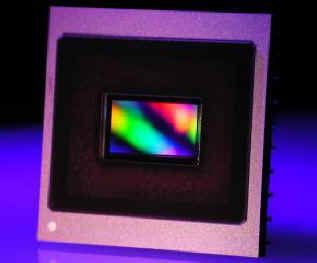High-definition video production headed for indie filmmaking market
Albany (NY) - A producer of digital video equipment called Silicon Imaging, is promising to reveal at next week's NAB 2006 convention in Las Vegas a small-form factor digital motion picture camera capable of shooting 1920 x 1080 progressive resolution video with 16:9 aspect ratio, at up to 60 fps, using a four-hour battery and a 2-1/2" 160 GB hard drive, and selling for about $20,000.
The goal of Silicon Imaging is evidently to bring maximum resolution video production into the realm of feasibility of smaller producers. As part of the company's plan, the SI-1920HDVR will be engineered to support a new industry standard for digital encoding of RAW images. Called CineForm RAW, like other RAW "formats," its digital file encodes exactly what the camera's sensors pick up, pixel for pixel, without reorganization or compression. What's important about RAW formats is that they sacrifice none of the information a camera detects, in the name of standardization. It thus becomes up to the digital editing software to make sense of the ways in which different brands of cameras store digital information. To that end, Adobe's Production Studio software will faithfully interpret the RAW data this camera stores to its built-in hard drive, for what the company touts as full integration - not just compatibility - with the editor software.
Silicon Imaging's announcement this morning was without a photograph of the camera itself - ironically, the company told us, one was almost made available at press time, but not yet developed. However, the announcement was replete with superlatives, or figures that at least sounded like superlatives, so we checked them out to see to just what extent this camera will be revolutionary.
The CMOS detector chip used in Silicon Imaging's new MegaCamera HD series video camera...which is all the camera we're allowed to see, up until NAB 2006. (Courtesy Silicon Imaging)
According to the company, the SI-1920HDVR boasts a dynamic range of 68 decibels (dB), which is an indicator of the relative values between the brightest brights and the darkest darks the camera can detect. (The dynamic range of a sound system's speakers is measured exactly the same way.) Since the camera's detectors are based in on a CMOS chip, they're prone to displaying greater amounts of noise within the darker regions of an image. Because video cameras typically devote more bit values to encoding bright pixels than dark ones, your eyes notice noise in the dark areas more readily than in the light ones; differences between the brightness values are more pronounced in the darker areas, simply because there are fewer available darker values in the encoding system. This is why high dynamic range is important.
At about 66 dB of dynamic range, a video camera on monochrome mode can capture up to 2,048 discrete grayscale levels. There will tend to be more brighter than darker pixels on this scale by virtue of the fact that most cameras capture with gamma set to 2.2 - just like it is for PC monitors - and Silicon Imaging's camera should be no different here. The dynamic range of DVD players hovers around 96 dB - which denotes their theoretical capability, although videos certainly don't always approach that range. But this denotes the theoretical 16-bit range of depth of encoded DVDs; Silicon Image's 68 dB figure hovers at 11 bits, and probably 12 with some frames. For its RAW output - which is actually quite unusual, since most video cameras pre-process the color for standard output - the SI-1920HDVR (which may be sold under the brand name MegaCamera HD) will output 12 bits-per-pixel uncompressed images at 150 Gbps. Any screwing up of the image, the goal appears to be, will be done through the Adobe software, not the camera.
While these numbers alone don't break barriers, they're not depressing either, especially when you consider the form factor: The SI-1920HDVR is a handheld camera that stores to a hot-swappable USB 2.0 hard drive, though its contents can also be addressed remotely through a CAT 5 gigabit Ethernet plug. Suddenly the versatility alone promises a breakthrough class of camera, especially for the independent producer.
Get Tom's Hardware's best news and in-depth reviews, straight to your inbox.
Then we get to the fun part: If you don't mind stepping the camera down to a "meager" 720p resolution (which is still within the HDTV range for many sets in use today), you can capture slow-motion photography at 120 fps (film only requires 24 fps). And if you can believe this, you can pair two of these cameras together for stereoscopic mode, to produce real 3D videos at high-definition quality for under $40K. This camera will indeed make some waves, as NAB 2006 attendees next week look for new ways not only to cut production costs, but open up realms of possibility for what video can actually achieve.
